How to Drill Out a Broken Bolt (5 Methods)
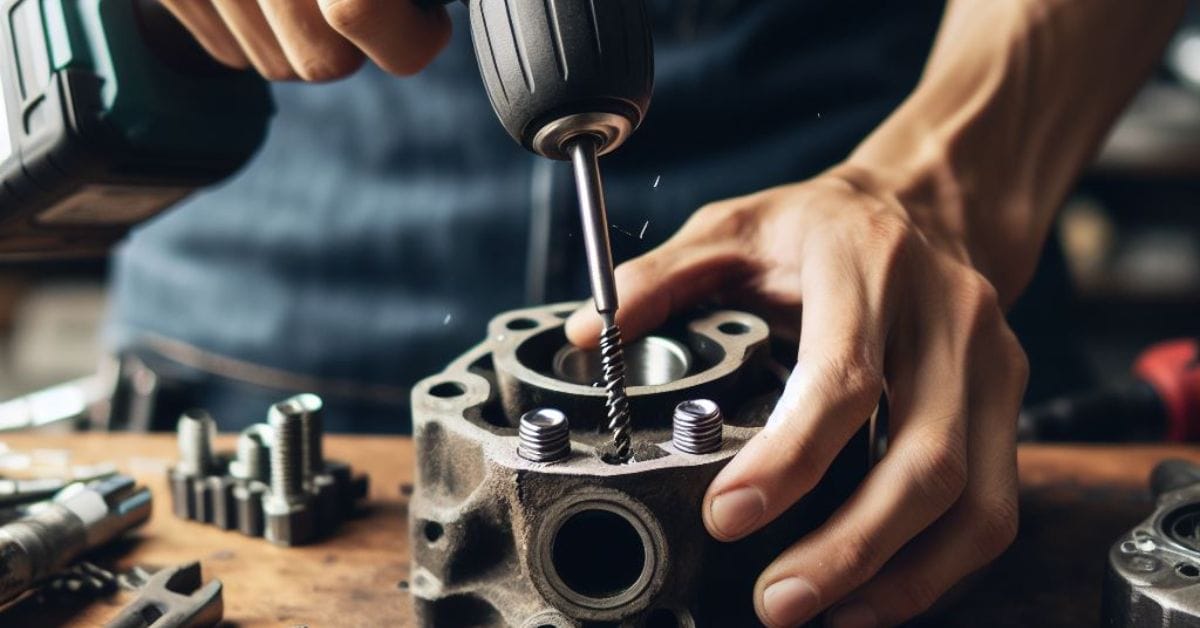
Stuck or broken bolts can be a nuisance, but there are ways to pull them out easily!
In some situations, the bolt can be lodged deep inside a metallic hole if not exposed to the surface. Some people leave them in or try to remove them wrongly. Forgotten or neglected broken or stuck bolts can cause rust and damage to the parts around them. Knowing how to remove them can serve you well in avoiding shelling out on a handyman.
In general, to drill out a broken or stuck bolt from a metallic object:
- Position a center punch and hit it with a hammer onto the broken bolt.
- Drill a pilot hole in reverse or with a left-hand drill bit until the broken bolt grabs the drill bit firmly.
- Extract the broken bolt using pliers or a vice grip if necessary.
- Apply the above steps alone or in combination with one or more of the alternative methods in this guide.
- Remove the filings using a magnet or compressed air.
I will go into more detail below on the main method and some alternatives.
Methods and Requirements
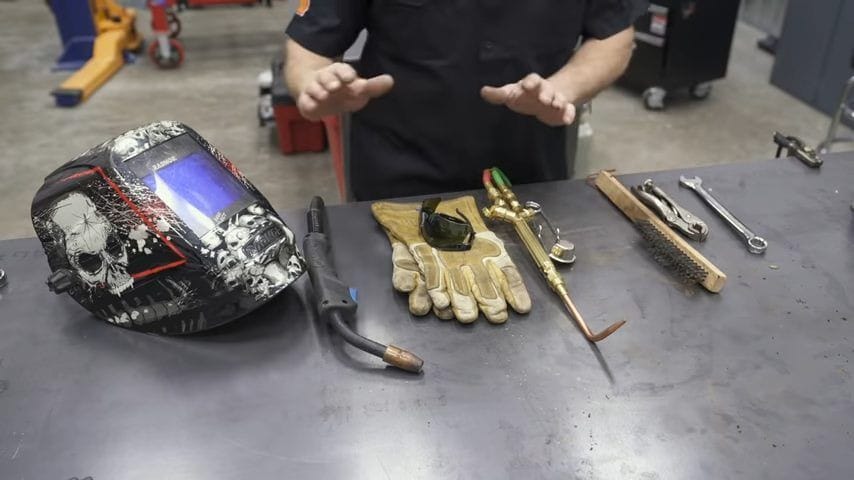
Methods
I will show how to apply each of the following methods to remove or drill out a broken bolt:
- Drilling out a broken bolt (main method)
- Turning the broken bolt
- Using a hammer and chisel
- Welding a nut onto the stuck bolt
- Applying heat to the broken bolt
Method 1 is the main method, but you can apply it separately or in combination with one or more alternative methods (2-5) mentioned in the above list.
What You Will Need
Fetch the following tools to make your work easy:
- Reverse or left-hand Drill Bit
- Pliers
- Hammer
- Source of heat
- Welding equipment
- A nut
- Chisel
- Spanner
- Penetrant
Main Method 1: Drilling Out a Broken Bolt
You can drill out a broken bolt using a reverse drill bit or a special extractor bit.
Reverse drill bits can be very helpful in removing broken bolts, and you may be able to purchase a special ‘extraction kit’ for this purpose.
Unlike the welding technique (Method 4), you can use this method to remove even deep-lodged bolts. However, you must use the correct drill bit for the situation. Follow the steps below.
Step 1: Position a Center Punch and Hit It
Position a center punch close to the middle of the stuck bolt.
Hit it squarely with a hammer to make it easy to drill a pilot hole in the next step. It could also help to reduce the risk of damaging the broken bolt’s threads.
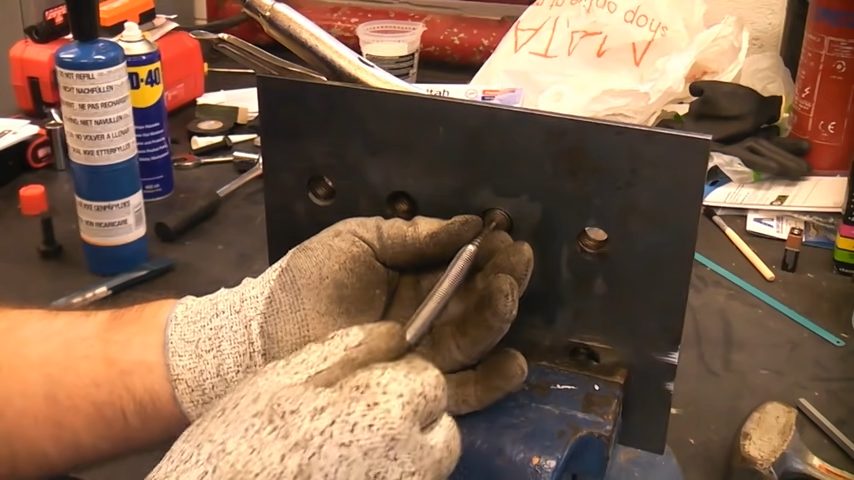
Step 2: Drill a Pilot Hole (In Reverse)
Then, use a reverse drill bit to cut a pilot hole in the broken bolt.
The torque must be in the opposite direction to the broken bolt to prevent the bolt from tightening. Making a precise pilot hole is critical to avert any damage to the bolt threads. Damaging the threads can cause major issues or even complicate the extraction process.
Use a reverse-drilling setting, such as 20 RPM, to drill into the pilot hole gently. The drill bit is made of hardened steel. So, if it breaks off while drilling, you may experience more problems extracting it.
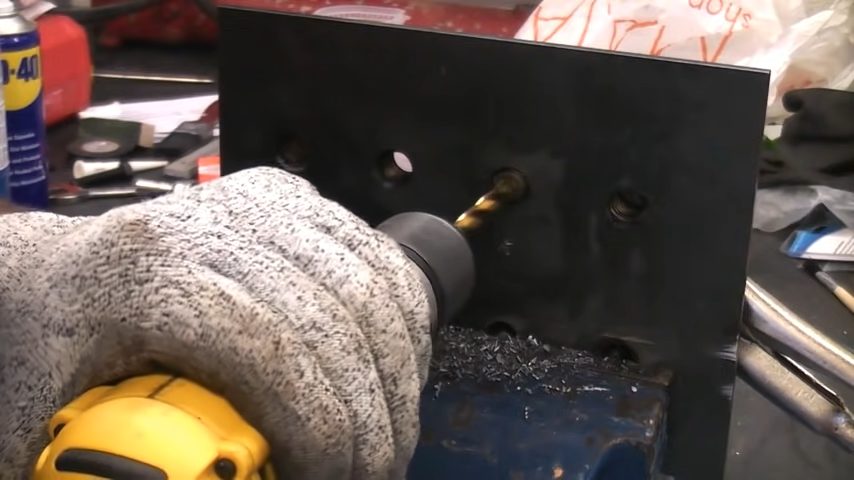
If using an extracting bit, it will have a tapered left-handed bit at one end and a T-handle or hex head at the other. Tap the tapered end gently with a hammer before turning the handle.
Step 3: Extract the Broken Bolt
While reverse drilling, the stuck bolt will eventually grab onto the drill bit, extracting it.
Keep drilling steadily and slowly until the whole bolt is extracted. If using an extracting bit, the tapered end should help loosen the bolt once it snugly fits inside the broken bolt.
Use a pair of vice grips or pliers if it helps to remove the broken bolt once it surfaces completely.
Step 4: Remove the Filings
Use a magnet to remove the broken bolt’s metal shaving, filings, and other debris left behind during reverse drilling.
Hover a powerful magnet above the hole to capture the metal debris. Alternatively, you can use compressed air to blast the metal shaving.
Caution: Do not insert a new bolt without removing the metal debris. Otherwise, it may seize or sheer off.
Method 2: Turn the Broken Bolt the Right Way
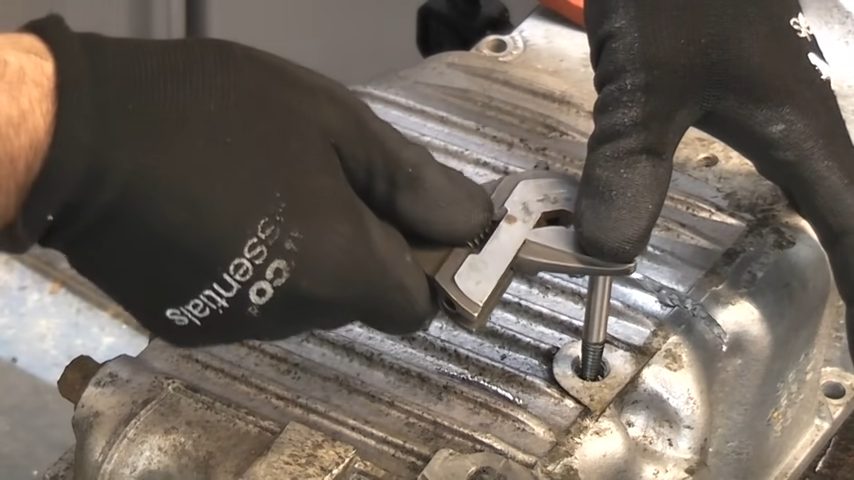
The simplest technique to extract a broken bolt from a metal surface or hole is by turning it in the right direction.
This technique is appropriate where the bolt is not strongly attached to a surface and somewhat projects above it. Grab the bolt with a pair of pliers and turn it in the right direction, normally counterclockwise, to remove it.
Method 3: Use a Hammer and Chisel (3 Steps)
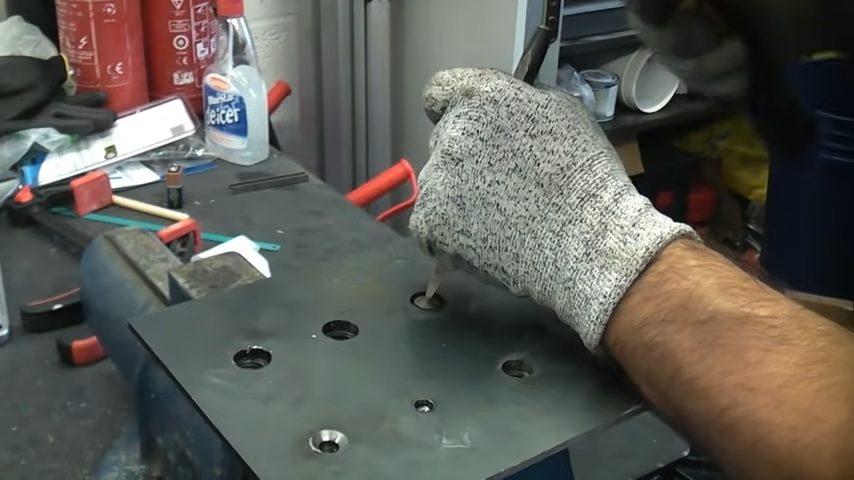
You can often remove a broken bolt with a hammer and a chisel. Proceed as follows:
Step 1: Use the Right Chisel
Grab the correct size chisel that fits the hole and incline it at an angle favorable for hammering.
Step 2: Hit the Chisel
Hit the chisel with a hammer until it goes into the broken bolt.
Keep doing that around the broken bolt until it becomes possible to remove the broken bolt.
Step 3: Use Pliers or the Welding Method
Once the bolt is exposed above the surface, you can pull it out with pliers or weld a nut and remove it (Method 4).
Method 4: Weld a Nut Onto The Stuck Bolt (5 Steps)
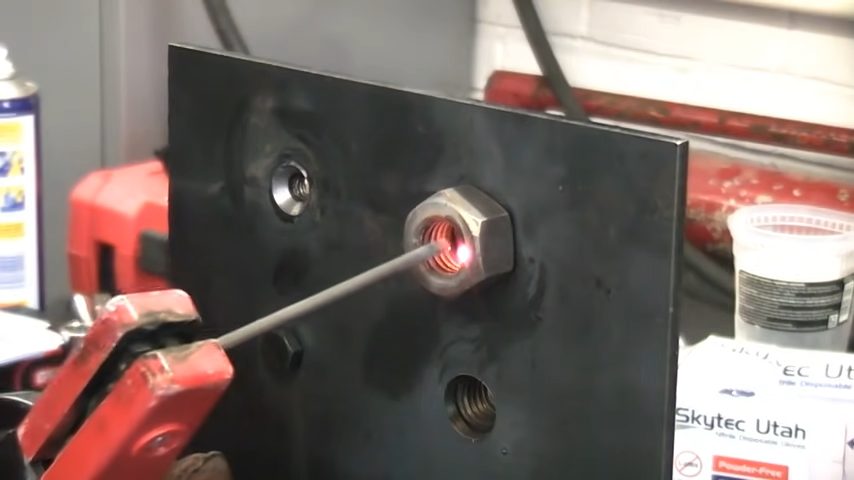
Welding a nut onto a broken bolt is another possible solution for stuck bolts.
It is an easy method if you have a welding machine. But it is only suitable if the broken bolt is not lodged too deep inside the recess or where it was fixed. The steps below will guide you through this method:
Step 1: Scape Off Fragments and Dirt
Scrape off the metal fragments or dirt from the stuck bolt using any relevant object.
Step 2: Use the Correct Nut
Next, identify the correct-sized nut that matches the broken bolt.
Step 3: Align the Nut
Align the nut on the surface of the broken bolt.
To prevent the broken nut from sliding off, you may apply super glue and fix it on the nut before welding. You can use any other technique to secure the nut during welding.
Step 4: Weld the Nut
Weld the nut onto the broken bolt until it sticks firmly.
The heat generated during welding will also help loosen the nut—weld on the inside for greater effectiveness.
Let the weld cool down before the next step.
Step 5: Remove the Broken Bolt
Use a correct-size spanner or wrench to remove the broken bolt welded on the nut.
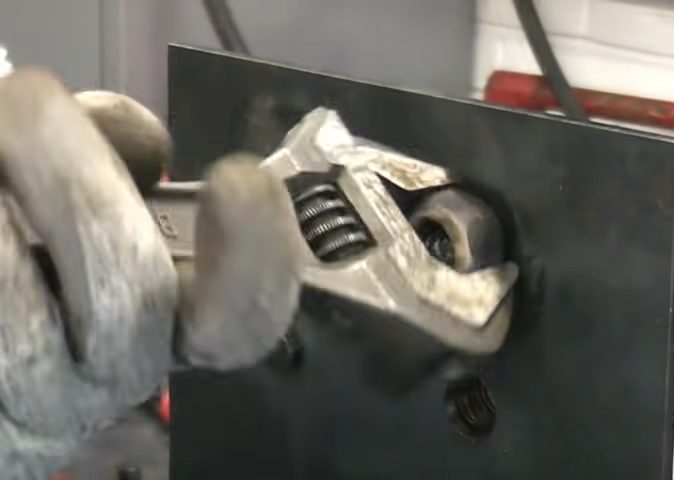
Method 6: Apply Heat (4 Steps)
In this heat application method, the broken bolt is weakened by applying heat and then removed. Follow the procedure below.
Step 1: Spray the Joint
First, spray the joint with PB Blaster penetrating oil and wait a few minutes.
Step 2: Soak Excess Penetrant
Use a rag to soak the excess penetrant.
The oil is not super-flammable, but it will catch fire if there is plenty of unelaborated liquid.
Step 3: Light a Flame
Next, light the oil with a propane flame.
Always aim the torch to point away from you for safety reasons.
Step 4: Heat the Bolt
After igniting the stuck joint, heat the bolt.
Repeated heating and cooling should prove highly effective. When the broken bolt is loosened, you can use a spanner or any other appropriate tool to pull it out.
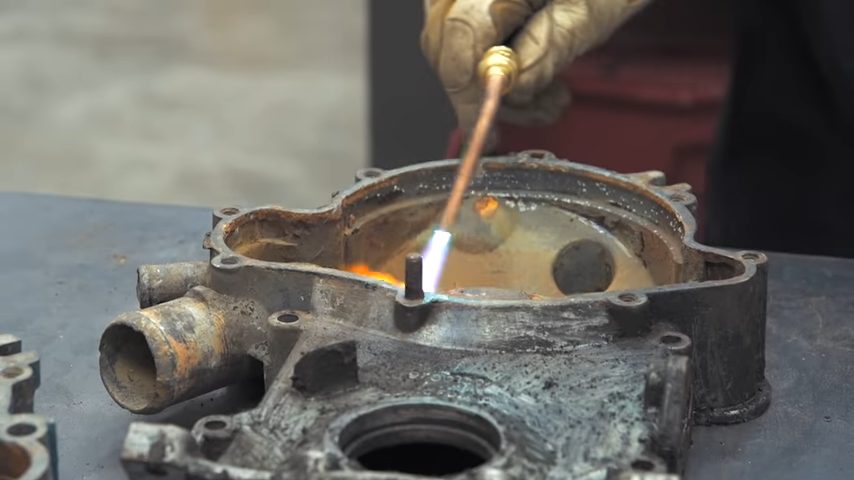
References
Website Resources:
- metal debris. https://www.sciencedirect.com/topics/engineering/metallic-debris
- heating and cooling. https://www.energy.gov/energysaver/principles-heating-and-cooling
Video References:
Hagerty
Ultimate Handyman
